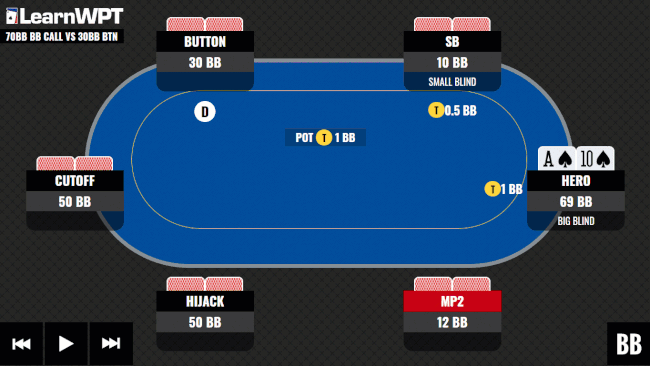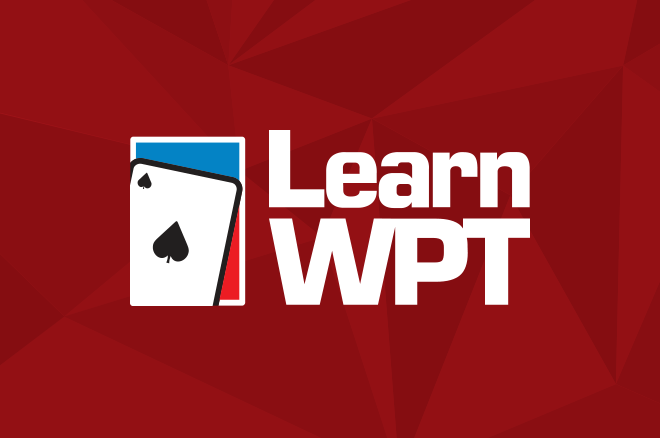Today you’ll be playing as the chip leader at a tournament final table. You have called from the Big Blind against an open raise from the medium stack on the Button. Note that there are 2 short stacks at this final table with 10BBs and 12BBs. The presence of these shorter stacks factored in with the pay jumps, creates pressure on the medium stacks at the table. Villain’s hand range to open raise on the Button in this scenario is significantly narrower than a normal Button opening range due to this pressure. If the player on the Button is not adjusting to this fact and opening too wide, you should be relentlessly reraising their opens in this spot. In this scenario we are assuming the player on the Button is a solid winning player who has adjusted correctly.
Since the Button’s preflop range is narrower, they will tend to have more equity on a variety of flops. We should generally start by checking to them on the flop. We can check-call with our medium strength made hands and check-raise with a polarized range of weaker hands, including hands like bottom pair or even complete air, with backdoor draws, and stronger hands. When you do check-raise the flop with air and get called, checking the turn is generally the best play unless you pick up one of your backdoor draws.

When taking a check-call line across multiple streets (which is appropriate with many pairs worse than top pair that are unlikely to improve), be aware that Villain’s barreling range will be tighter than normal due to the aforementioned pressure on them. Since they should be wary of busting out before the short stacks, the Button may not be willing to get their stack in with a wide range of hands. This fact will cause you to fold some more medium strength hands to their all-in bets.
When you check the flop and Villain checks back in position, you can fire big on the turn when you hold both made hands as well as lower equity draws. Since Villain would often bet with bigger hands on the flop, you can use a larger sizing on the turn to attack their now somewhat weaker range.
As always, keep in mind that our goal is to play well and that sometimes the correct play will result in you losing some pots.
To access the free five hands, visit this page.
Regular play on the WPT GTO Trainer will help you adjust your decisions closer and closer to GTO strategy.
You don’t have to be the world’s best player to use GTO Strategy, and thanks to the WPT GTO Trainer, now you don’t have to buy expensive software or have expert level knowledge to study GTO.
Why use the WPT GTO Trainer?
The WPT GTO Trainer lets you play real solved hands against a perfect opponent in a wide variety of postflop scenarios for cash game and tournament play.
If your goal is to be a tough poker player then you should try the WPT GTO Trainer today.
Register a free account here (it only takes your e-mail address to begin) to play hands and see true GTO strategy in real-time.
The WPT GTO Trainer has over 4 billion unique solved flops, turns and rivers that are fully playable.
As you make decisions in a hand, you receive instant feedback on the specific EV loss (if any) and Played Percentage for every action you take as compared to GTO strategy.
The full selection of scenarios for the WPT GTO Trainer are only available to members of LearnWPT, however we’re giving PokerNews Readers free access to the Trainer on a regular basis with the WPT GTO Hands of The Week.
Use this series of articles to practice the strategies you learn on LearnWPT (or at the table) and test your progress by playing a five-hand sample each week.
